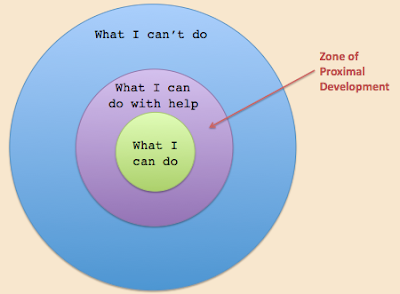Urie
Bronfenbrenner, Russian-born
American psychologist is best known for having developed human ecology theory.
The human ecology theory also known as the ecological systems theory, in which
individuals are maturing not in isolation. Individuals are developing within
the context of relationships, such as those involving
families, friends, schools, neighbourhoods, and society.
Bronfenbrenner divided the entire ecological system in which human
growth occurs into five subsystems that are organized socially:
1. The microsystem,
2. The mesosystem,
3. The exosystem,
4. The macrosystem, and
5. The chronosystem.
Viewed from the innermost system outwards, Bronfenbrenner’s model
illustrates the following systems:
A child lies in the middle of the image. Each circle that surrounds the
child is a different layer or environmental system that affects the child's
growth and development.
Microsystem — This is the first, and closest, layer of the nested
systems which encompasses an individual’s human relationships,
interpersonal interactions and most immediate surroundings. Thus, depicting the
relationship between an individual child and his/her parents, siblings,
and school environment.
Mesosystem — Moving outwards, the second layer surrounding the
microsystem encompasses the different interactions between the characters
contained within the microsystem. This could include, for instance, the
relationships between a child’s family and their schoolteachers. For any
interaction to qualify as part of the mesosystem, it must be a direct
interaction between two features of the bio-ecological system which influence
the development of the individual child.
Exosystem — The third layer is the exosystem which incorporates
elements of the bio-ecological systems which do not directly affect the child
but may have an indirect influence. For instance, if a parent were to be made
redundant or have their working hours reduced, this would then indirectly
affect their child in that such events would create parental stress and
reduce the family income.
Macrosystem — The outermost, “macro” layer of the bio-ecological
model encompasses cultural and societal beliefs, decisions and actions which
influence an individual child’s development. This might include, for example,
religious influences or parliamentary legislation.
Chronosystem - Lastly is the chronosystem. This system includes major
life transitions, environmental events and historical events that occur during
development. Moving to another city is one example, as is the first moon
landing being televised.
The application of social ecological theories and models focus on
several goals: to explain the person-environment interaction, to improve
people-environment transactions, to nurture human growth and development environments,
and to improve environments so they support expression of individual's system's
dispositions.
Urie's work led him to define human development as a lasting
change in the way a person perceives and deals with his or her environment. A
child is viewed as a growing dynamic entity that progressively moves into and
restructures an environment. The environment in turn exerts an influence on the
individual, requiring a process of reciprocity between person and environment.
Urie’s
Ecological Systems Theory proposed that human development unfolds in a nested
set of systems, involving cultural, social, economic and political elements, not
merely psychological ones. These systems and their interactions can nurture or
stifle optimal development. Policies and programs can play a major role in
shaping these systems – thus potentially promoting human health and well-being.
This perspective transformed the study of human development. Among other
influences, it encouraged more developmental scientists to examine both naturally
occurring and deliberately designed experiments in the real world to illuminate
the influences of contexts on human development, and particularly on child
development.
Moreover, Bronfenbrenner realized that the developmental process varies
by place and time and that public policy affects the development of humans by
influencing the conditions of their lives.
With American developmental psychologist Stephen J. Ceci, Bronfenbrenner
extended his theory to behaviour genetics. They recommended that explicit
measures of the environment in systems terms be incorporated, and they proposed
the existence of empirically assessable mechanisms—proximal processes through
which genetic potentials for effective psychological functioning are
actualized. They hypothesized that when proximal processes are weak,
genetically based potentials for effective psychological functioning remain
relatively unrealized and, as proximal processes increase in magnitude,
potentials become actualized to a progressively greater extent.
Process Person Context Time Model
Urie
Bronfenbrenner’s most significant departure from his original theory is the
inclusion of processes of human development.
Processes, per Bronfenbrenner, explain the connection between some aspect of
the context or some aspect of the individual and an outcome of interest. The
full, revised theory deals with the interaction among processes, person, context and time, and is labelled the Process–Person–Context–Time model
(PPCT). Two interdependent propositions define the properties of the model.
Furthermore, contrary to the original model, the Process–Person–Context–Time
model is more suitable for scientific investigation.
As per
Bronfenbrenner:
"Proposition 1: In its early phase and
throughout the life course, human development takes place through processes of
progressively more complex reciprocal interactions between an active, evolving
biopsychological human organism and the persons, objects and symbols in its
immediate environment. To be effective, the interaction must occur on a fairly
regular basis over extended periods of time. These forms of interaction in the
immediate environment are referred to as proximal processes.
Proposition 2: the form, power and content and
direction of the proximal processes effecting development vary systematically
as a joint function of the characteristics of the developing person, of the
environment-immediate and more remote-in which the processes are taking place
and the nature of the developmental outcome under consideration."
Processes:
Processes play a crucial role in development. Proximal processes are
fundamental to the theory. They constitute the engines of development because
it is by engaging in activities and interactions that individuals come to make
sense of their world, understand their place in it, and both play their part in
changing the prevailing order while fitting into the existing one.
The nature
of proximal processes varies according to aspects of the individual and of the
context—both spatially and temporally. As explained in the second of the two
central propositions, the social continuities and changes occur overtime
through the life course and the historical period during which the person
lives. Effects of proximal processes are thus more powerful than those of the
environmental contexts in which they occur.
Person:
Bronfenbrenner acknowledges here the relevance of biological and genetic
aspects of the person. However, he devoted more attention to the personal
characteristics that individuals bring with them into any social situation. He
divided these characteristics into three types' demand, resource, and force characteristics.
Demand characteristics are those that act as an immediate stimulus to another
person, such as age, gender, skin colour, and physical appearance. These types
of characteristics may influence initial interactions because of the
expectations formed immediately. Resource characteristics are those that relate
partly to mental and emotional resources such as past experiences, skills, and intelligence,
and to social and material resources (access to good food, housing, caring
parents, and educational opportunities appropriate to the needs of the society).
Finally, force characteristics are those that have to do with differences of
temperament, motivation, and persistence.
According to Bronfenbrenner, two
children may have equal resource characteristics,
but their developmental trajectories will be quite different if one is
motivated to succeed and persists in tasks and the other is not motivated and
does not persist.
As such, Bronfenbrenner provided a clearer
view of individuals’ roles in changing their context. The change can be
relatively passive (a person changes the environment simply by being in it), to
more active (the ways in which the person changes the environment are linked to
his or her resource characteristics, whether
physical, mental, or emotional), to most active (the extent to which the person
changes the environment is linked, in part, to the desire and drive to do so,
or force characteristics).
The context,
or environment, involves four of the five interrelated systems of the original
theory: the microsystem, the mesosystem, the exosystem, and the macrosystem.
Time: The
final element of the PPCT model is time. Time plays a crucial role in
human development. In the same way that both context and individual factors are
divided into sub-factors or sub-systems, Bronfenbrenner and Morris wrote about
time as constituting micro-time (what is occurring during the course of some
specific activity or interaction), meso-time (the extent to which activities
and interactions occur with some consistency in the developing person’s
environment), and macro-time (the chronosystem). Time and timing are equally
important because all aspects of the PPCT model can be thought of in terms of
relative constancy and change.
This rightly talks about the
concept of what happens in a school, as the teacher is….... so, the child learns.
Or, as the parent is……. so, the child adopts.
In today’s scenario, bringing up
a blooming and curious child, where there are several distractions is too
difficult.
To reap best we need to work hard as a parent, teacher and as a
responsible individual. Providing an individual with a better environment is very important, may not be a strict environment where children are stressed but a healthy one with proper limits. Providing too much freedom is also not very good for a proper development.
Too much of anything is bad!
The entire cycle of development is connected and so is the universe. Children are the ‘Ambassadors of World Peace.'




























